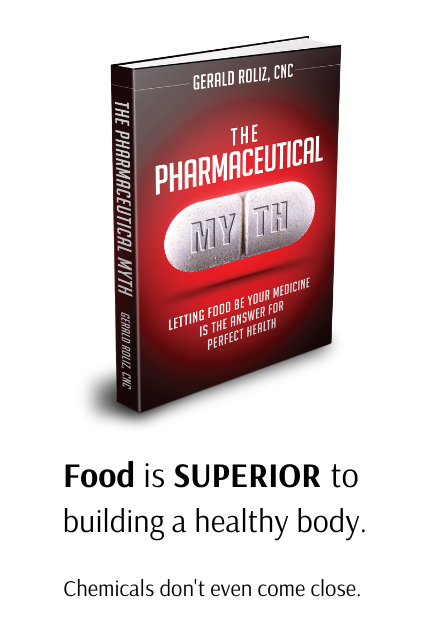Preparation for a medical assessment starts even before you step into the diagnostic room. Accessible and well-reviewed medical records including past diagnoses and treatments, along with an organized assessment area that’s equipped with necessary tools like stethoscopes, are essential. These elements do more than merely set up the scene; they pave the way for an accurate diagnosis and effective treatment. But there’s another factor that wears the crown – a comprehensive medical history. It colors in the dots from years of health puzzle pieces, revealing patterns, predispositions, and risks which might have otherwise been overlooked. A world of understanding about your wellbeing unfolds from it.
In functional medicine, the assessment and diagnosis process involves a comprehensive evaluation of an individual’s health through in-depth history-taking, targeted testing, and analysis of physiological imbalances. This approach allows for personalized treatment plans tailored to address the root causes of health issues rather than just treating symptoms.

Essential Preparations before Assessment
Imagine you’re about to cook your favorite meal. The first step is to gather all the necessary ingredients and utensils neatly on the kitchen counter before starting, right? Well, just like in cooking, preparation is key when it comes to conducting a thorough medical assessment. Before you begin, it’s essential to ensure that everything you need is at hand—from the patient’s medical records to the various tools required for the assessment.
First and foremost, having quick access to the patient’s medical records is a game-changer. These records contain valuable information about the patient’s past medical history, previous diagnoses, treatments, and medications. Reviewing these records can provide crucial insights that might influence the current assessment and diagnosis. For example, knowing about any previous surgeries or ongoing medications can help in understanding the patient’s current symptoms and health status.
Furthermore, ensuring that the assessment room is well-equipped is equally important. It should be organized and stocked with all the necessary tools such as stethoscopes, blood pressure cuffs, thermometers, reflex hammers, and otoscopes. These tools are like a chef’s knives; they are indispensable for carrying out a comprehensive physical examination. A well-prepared assessment room ensures that no time is wasted searching for essential equipment during the assessment.
These preparations streamline the assessment process, leading to a more accurate diagnosis and effective treatment plan.
Think of it this way: If you were a carpenter about to build a beautiful piece of furniture, you wouldn’t want to run around looking for your tools. You’d want them neatly arranged within arm’s reach so that your work progresses smoothly and efficiently. Similarly, a well-prepared assessment room allows healthcare professionals to conduct assessments swiftly and effectively.
As you can see, prior preparations are not just about being organized—it’s about being able to provide the best care possible for every patient.
In essence, these essential preparations set the stage for a successful medical assessment by ensuring that all necessary information is readily available and that the assessment room is equipped for a thorough evaluation. These simple steps play a significant role in enhancing the accuracy of diagnosis and subsequent treatment planning.
Now that we’ve explored the vital preparatory steps needed for a successful medical assessment let’s delve into the significance of obtaining a comprehensive medical history.
Comprehensive Medical History and its Significance
Imagine you’re like a detective trying to solve a mystery. You wouldn’t start at the last chapter of a book, would you? No, you’d start from the beginning and gather all the clues before you can unveil the truth. Well, gathering a comprehensive medical history is just like that – it’s where we collect all the necessary clues about a person’s health from the very beginning.
Just like pieces of a puzzle, each part of a patient’s medical history helps us to see the bigger picture. It tells us about past illnesses, surgeries, allergies, medications – all of which play a role in understanding a patient’s current health status. Family medical history and lifestyle habits also come into play.
By learning about a patient’s family medical history, we can discover any conditions or diseases that might run in their family. This can give us insight into what conditions they may be predisposed to and if they have an increased risk factor for certain illnesses.
For instance, if several members of a patient’s family had heart disease or diabetes, it would alert us to focus on monitoring and preventing those conditions for the patient as well. Similarly, knowing about lifestyle habits such as smoking, diet, and exercise routines can provide vital information pertinent to their health.
The significance here lies in the fact that all this information forms a critical foundation for making decisions regarding the most effective treatment plan for their current condition. Knowing these details helps us recommend more precise and personalized treatments based on their unique history.
Facts don’t lie; compiling this data during clinical visits has been found to lead to more accurate diagnoses approximately 70% of the time.
It allows us to not only identify patterns but also to recognize predispositions and potential risk factors that could aid in diagnosing and devising an effective treatment plan for the patient’s current condition.
So, think about it as connecting all the dots in a painting; every single dot is important because when combined together, they create a beautiful and clear picture – one that guides us in delivering personalized care to our patients.
In this intricate web of medical detective work, each piece of information serves as a crucial clue leading us closer to solving the mystery of our patients’ health. As we delve further into the diagnosis process, it becomes clearer why the physical examination holds its own unique significance in unraveling these mysteries.
Role of Physical Examination in Diagnosis
When we talk about assessing and diagnosing a medical condition, the power of a physical examination shouldn’t be underestimated. It’s akin to being a detective; you’re on the lookout for clues that can help unravel what’s happening inside the patient’s body. Imagine it as a hands-on investigation, where meticulous inspection, palpation, percussion, and auscultation are employed to detect any physical irregularities such as swelling, tenderness, or unusual sounds.
This step is important because it adds another dimension to our understanding of the patient’s health. Let me explain why this matters so much. See, sometimes when we talk to patients and learn about their symptoms, we might miss small details that could be key pieces of the puzzle. But when we lay our hands on them and explore further with these techniques, we can often pinpoint things that may have gone unnoticed.
For instance, feeling for areas of swelling might reveal an underlying health issue that wasn’t immediately apparent during the discussion of symptoms. Sending those vibrations through the body by tapping in percussion or listening to internal sounds with a stethoscope through auscultation provides vital information that contributes to a more nuanced diagnosis.
Over time, research has consistently shown that physical examinations are crucial in helping healthcare providers form a complete picture of a patient’s health. Oftentimes, these physical abnormalities present patterns or specific qualities that can be indicative of certain conditions.
In essence, performing a thorough physical examination isn’t just a routine check-up; it’s an invaluable tool in identifying critical clues that contribute to an accurate diagnosis and ultimately guide effective treatment pathways.
As we continue our exploration of essential medical practices, let’s now turn our attention to the significance of diagnostic tests in uncovering underlying health issues.
Diagnostic Tests and their Importance
Once a healthcare professional has observed and examined a patient, they may still need more information to confirm or rule out specific medical conditions. This is where diagnostic tests come into play. These tests provide objective data that can be crucial in determining an accurate diagnosis and creating an effective treatment plan.
Blood work, for instance, can reveal important details about a patient’s health by measuring different markers such as blood cell count, cholesterol levels, and indicators of organ function. Imaging scans like X-rays, CT scans, and MRIs allow healthcare professionals to peer inside the body and identify abnormalities such as tumors, fractures, or other structural changes.
Consider this scenario: A patient comes in with chest pain. An electrocardiogram (ECG) can quickly and effectively diagnose a heart attack, guiding immediate intervention that could save the patient’s life. In this case, timely diagnostic testing is critical for swift decision-making regarding the patient’s care. Additionally, biopsies—the process of examining tissue samples under a microscope—provide essential information about the nature of tumors or lesions, aiding in the determination of whether they are cancerous or benign.
The Role of Precision Medicine
One of the most significant advancements facilitated by diagnostic tests is the rise of precision medicine. By analyzing a patient’s genetic makeup, biomarkers, and other individual characteristics, healthcare professionals can tailor treatment plans to address the patient’s specific needs.
For example, advances in molecular diagnostics have allowed for more personalized cancer treatments. By identifying specific genetic mutations within a tumor, physicians can prescribe targeted therapies that are more effective and less harmful than traditional treatments. In cases of infectious diseases like COVID-19, rapid PCR tests are instrumental in diagnosing the virus and implementing timely isolation measures to prevent its spread. Moreover, diagnostic tests play a crucial role in monitoring disease progression and treatment efficacy over time. For instance, regular blood tests can track cholesterol levels in patients undergoing treatment for cardiovascular disease.
Overall, diagnostic tests are pivotal in providing healthcare professionals with vital insights into a patient’s health status. From confirming or ruling out potential medical conditions to customizing treatment plans based on individual variations, these tests form an integral part of modern medical practice.
As we navigate the complex landscape of assessment and diagnosis in healthcare, let’s now delve into the sequential steps involved in this intricate process.
Steps in the Assessment and Diagnosis Process
Consider the assessment and diagnosis process like unraveling a puzzle to uncover the right diagnosis, which is the first step towards effective treatment. Let’s break down each step starting with:
Step I – Patient Interview
The patient interview serves as vital groundwork for the assessment process. It’s akin to a skilled detective gathering clues from a witness. Active listening is crucial here; it involves creating an environment where the patient feels comfortable enough to share their symptoms and medical history openly. Asking open-ended questions facilitates a more thorough understanding of the patient’s concerns and experiences, fostering an environment of trust and openness, which can yield crucial information for an accurate diagnosis.
Step II – Physical Examination
Next comes the physical examination, resembling an in-depth evaluation of each piece of evidence under a magnifying glass. Healthcare professionals conduct a methodical examination, paying close attention to even subtle anomalies or irregularities that could shed light on the patient’s condition. Keen observation and astute analysis are key, as seemingly insignificant details can offer significant insights into the patient’s health status.
Step III – Order Diagnostic Tests
After gathering initial information from the interview and physical examination, it’s time for diagnostic tests. These tests serve as scientific tools that provide objective data about the patient’s condition, guided by factors such as the patient’s medical history, presenting symptoms, and findings from the physical exam. With advancements in medical technology and diagnostic tools, healthcare providers have a wide array of options ranging from blood tests, imaging studies such as X-rays and MRIs, to more specialized tests for specific conditions.
Each step in the assessment process builds upon the last—working together like pieces of a complex problem-solving puzzle—to ultimately arrive at an accurate diagnosis that informs subsequent treatment plans effectively.
Interpretation of Medical Diagnostic Results
Medical diagnostic results are akin to pieces of a puzzle in a detective’s hands, holding valuable information crucial for understanding a patient’s health status. Yet, it’s not solely about reading numbers and values; it entails a thorough analysis to comprehend the implications of these results and how they intertwine with the patient’s overall condition. This process necessitates a holistic understanding of normal ranges, pathological thresholds, and the nuances associated with various diagnostic methodologies.
When interpreting medical diagnostic results, healthcare professionals meticulously analyze the acquired data to derive meaningful insights essential for accurate diagnoses and effective treatment plans. For example, an elevated level of white blood cells could signify an ongoing infection, while certain markers in a blood test may suggest the presence of an autoimmune disorder.
Consider this: A lipid panel may reveal elevated levels of cholesterol and triglycerides, indicating a higher risk of cardiovascular diseases like heart attacks and strokes. By comprehending these results, healthcare providers can recommend appropriate lifestyle modifications, medications, or further investigations to effectively address these risks.
Moreover, the interpretation of diagnostic results integrates with the patient’s symptoms, medical history, and physical examinations to form a comprehensive clinical picture. For instance, if a patient presents with symptoms of fatigue and shortness of breath alongside an abnormality in their blood test indicating low hemoglobin levels, this combination could raise suspicions of anemia or other underlying health conditions.
In essence, the interpretation of medical diagnostic results goes beyond identifying abnormalities; it involves connecting the dots between data points to piece together an accurate diagnosis and treatment plan aligned with the patient’s specific health needs. If you’re seeking professional medical assessment services that prioritize this comprehensive approach, our website offers specialized services in functional medicine.
Understanding medical diagnostic results is crucial for informed decision-making in healthcare. Visit our website at “https://nhicidaho.com/services/functional-medicine” to access expert functional medicine services that prioritize comprehensive assessment and diagnosis.



